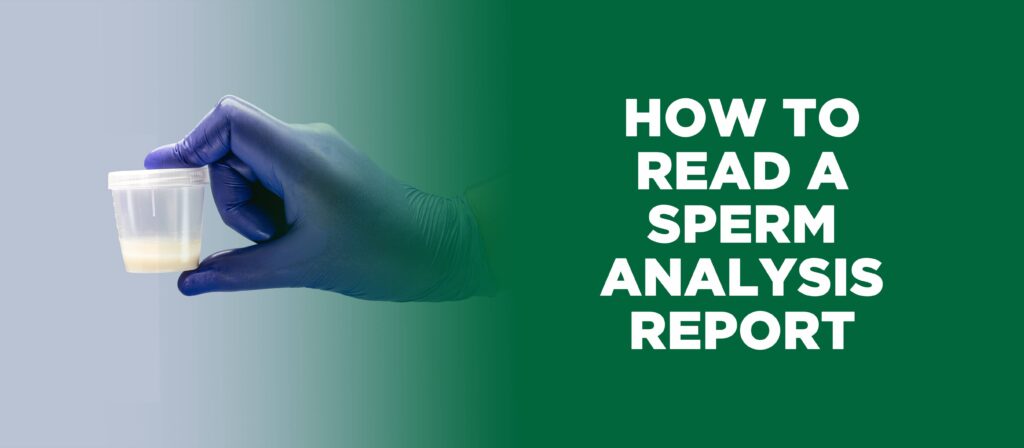How to Read a Sperm Analysis Report
For couples trying to conceive, understanding male fertility is crucial in their journey towards parenthood. A sperm analysis report provides valuable insights into a man’s reproductive health and the quality of his sperm.
This simple and non-invasive test assesses various parameters that affect fertility. In this blog, we will walk you through how to read male fertility test results and understand their significance in evaluating male fertility.
Parameters Involved
Before diving into the details of the report, let’s familiarize ourselves with the key parameters commonly analyzed in semen analysis:
- Sperm Count: This measures the concentration of sperm in one milliliter (ml) of semen. The World Health Organization (WHO) considers a sperm count of 16 million or more per ml as normal.
- Sperm Motility: It evaluates the percentage of sperm that are moving actively. For successful fertilization, at least 42% of the sperm should be motile.
- Sperm Morphology: This assesses the shape and structure of sperm. According to WHO guidelines, normal sperm morphology should be above 4%.
- Semen Volume: This indicates the total amount of semen produced during ejaculation. A normal semen volume ranges from 1.5 to 5 ml.
- pH Level: It measures the acidity or alkalinity of the semen. A pH level between 7.2 to 8.0 is considered normal.
Interpreting the Results
Now that we understand the parameters let’s explore how to interpret the results:
- Normal Results: If the sperm count, motility, morphology, and volume fall within the normal range, it indicates good male fertility. These results are encouraging for couples trying to conceive.
- Abnormal Results: Abnormalities in one or more parameters may indicate potential fertility issues. Low sperm count, poor motility, and abnormal morphology can reduce the chances of conception. If you receive an abnormal result, it’s essential to consult a fertility specialist for further evaluation and guidance.
Potential Causes of Abnormal Results
Several factors can influence the results of sperm analysis. Some common causes of abnormal results include:
- Lifestyle Factors: Excessive alcohol consumption, smoking, drug use, and a sedentary lifestyle can negatively impact sperm quality.
- Medical Conditions: Certain medical conditions like infections, hormonal imbalances, and varicocele (swelling of veins in the scrotum) can affect male fertility.
- Heat Exposure: Prolonged exposure to high temperatures (e.g., hot baths, saunas) can temporarily reduce sperm production.
- Age: Sperm quality may decline with age, especially after the age of 40
Tips to Improve Sperm Health
If your sperm analysis report indicates suboptimal results, there are steps you can take to improve sperm health:
- Maintain a Healthy Lifestyle: Adopt a balanced diet and an active life. Limit excessive alcohol intake and avoid smoking.
- Manage Stress: Chronic stress can impact hormone levels, affecting sperm production. Practice relaxation techniques to reduce stress.
- Avoid Heat Exposure: Limit activities that expose the testicles to excessive heat, such as hot baths or wearing tight underwear.
- Consider Supplements: Some men may benefit from supplements like antioxidants, which can support sperm health.
Conclusion
Understanding how to read a sperm analysis report empowers couples with valuable information about male fertility. If you have concerns about your fertility, consult a specialist at Plan B Fertility, who can guide you through the process and recommend appropriate treatments if necessary. With knowledge and support, couples can make informed decisions and take the necessary steps towards building their family.
